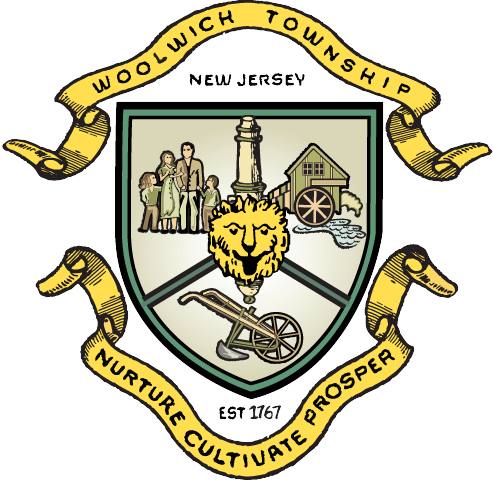About Woolwich
Woolwich Township is located in Western Gloucester County, New Jersey. First incorporated on March 17, 1767, Woolwich took its name from Woolwich, England, a town on the Thames River in southeast London, famous for the Royal Arsenal for the British armed forces. When Woolwich was first formed from Greenwich Township in 1750, it encompassed an area of 40,000 acres and was known as South Greenwich. Subsequent secessions reduced the land area to its present size of 21 square miles. In 1642, the first European settlement was established along the banks of the Raccoon Creek by Swedish and Finnish-speaking peoples who moved into the area to create homesteads and a town center that eventually became known “Swedeborough.” They gave shelter to the passengers of the first English ship to arrive in 1677, which docked on Raccoon Creek. With English settlement in the region, Swedish place names began to be replaced with English names, including that of “Woolwich.” Early settlers raised grain, fruit and vegetables, and tended stock. In 1902, historic Swedesboro, the principal town of Woolwich, was incorporated as a separate municipality and is entirely surrounded by the Township. Today, some of New Jersey’s richest farmland is located within Woolwich Township where agriculture remains an important industry despite suburbanization within designated growth areas.
While the Township once made national headlines as the fastest growing town in the Northeast, it has since preserved over 3,000 acres of productive scenic farmland and open space. With its commitment to comprehensive land use planning and growth management, the township has received numerous distinctions as a recognized leader in innovative growth and strategic land conservation. In 2017, the Township received the prestigious Annual Governor’s Environmental Excellence Award (GEEA) from the Christie Administration for preserving over 920 acres of valuable farmland within an eight-month period, with plans to preserve another 2,600 in addition to the 3,000 acres already preserved.
Residents, visitors and new businesses alike, are attracted to the Township’s quality of life and community character. Woolwich is proud of the quality of its schools, its low crime rate and its many community services. The Township continues to grow within well planned development centers that enjoy convenient highway access, a walkable downtown setting, and an expansive municipal park system which include abundant athletic fields and an on and off road trail network. In the countryside, miles of preserved farmland provide a welcome gateway into South Jersey’s agricultural underbelly; an unbroken farm belt that stretches from the Township all the way to Cape May County. When you take a ride into the Township’s countryside, you will come upon local attractions including a farm market loaded with award-winning produce, as well as one of the small-batch wineries or distilleries nestled among acres of farmland in a picturesque setting.
The Rt. 322 Corridor, which bisects the Township’s 2.5 square mile Regional Center, represents the largest undeveloped Turnpike Interchange remaining in the State. As one of only twenty state-designated, “Smart Growth” Centers in the State, “Kings Landing at Woolwich” will accommodate a diverse mix of land uses that, coupled with rigorous design standards, provide a range of development and conservation strategies that help protect the community’s health and natural environment, while making it more attractive and economically stronger.
With plans for the long-awaited installation of public sewer and water to commence in late 2018, the Township anticipates major transformative changes to the Rt. 322 Corridor. With access from Exit 2 of the New Jersey Turnpike, Route 295 and the Commodore Barry Bridge, the Rt. 322 Corridor will likely see major highway and destination-based growth in the near future. What sets Kings Landing at Woolwich apart from growth centers elsewhere, is the Township’s commitment to creating a truly walkable town center that will co-exist with open space, sensitive environmental features and civic places in a manner that will foster a distinctive community and sense of place.
